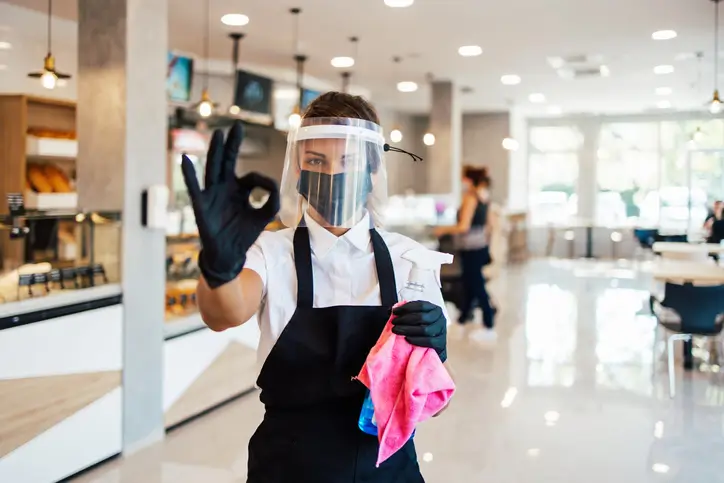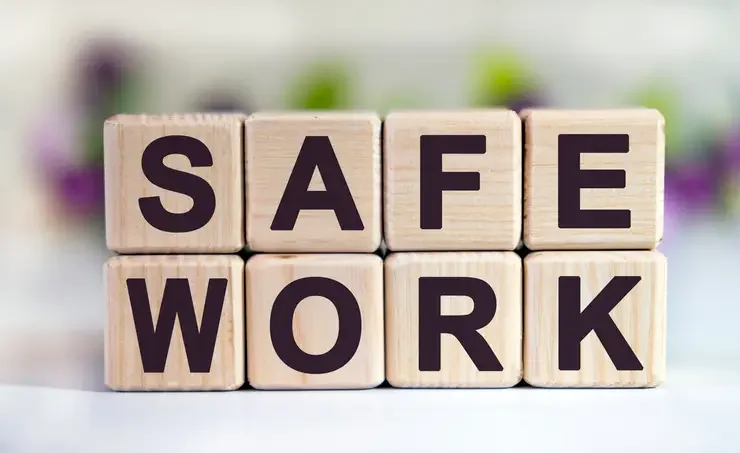OSHA Restaurant Guidelines: Safety Standards for Food Service
It’s no secret that the restaurant industry is a service and hospitality one. Yet, a calling must come from attention to detail on an aspect of the business beyond those bounds: safety and health compliance. Every plate that is served behind the scenes is served in a busy environment with sharp tools, hot surfaces, heavy lifting, and fast-paced activity, all of which have the potential to harm workers. That is where OSHA (Occupational Safety and Health Administration) comes in, providing a crucial role in ensuring the health and safety of restaurant employees.
Why OSHA Compliance Matters in Restaurants
According to the Bureau of Labor Statistics, in 2019 alone, more than 93,800 nonfatal injuries were reported among full-service restaurants in the United States. Such statistics underscore the importance of OSHA regulations in the food service industry. OSHA was established in 1970 to address the significant increase in workplace injuries that occurred after World War II. The agency educates, trains, inspects, and provides support programs to help employers comply with safety standards.
OSHA Standards that apply to restaurants
OSHA regulations apply to a wide range of industries, but some rules are specific to restaurants.
- OSHA Poster: Employers must post the official OSHA poster in a conspicuous place so that workers can see their rights and their employer’s responsibilities.
- Accident Reporting: ‘Accident reporting is required for any serious injuries, fatalities, or hospitalizations which must be reported to OSHA within eight hours.’
- Right to Medical Access: Employees have the right to access their medical records and can communicate directly with OSHA authorities.
- Legal requirement: Workplace injuries and illnesses must be kept up to date by recording actions in the workplace.
However, the first step to securing a safe and compliant working environment
How OSHA compliance works in daily operations
To promote a safe environment, employers should concentrate on a few key areas to align restaurant operations with OSHA standards.
Clear Communication Channels
Make the workplace culture transparent, communicative, and promote. Increase employees’ willingness to report hazards without fear of retrenchment. Safety protocols should be communicated verbally and in writing.
Comprehensive Safety Training
All restaurant employees need to be trained by OSHA. Safe handling of kitchen tools, working around hot surfaces, first aid basics, and emergency procedures are all covered in the topics.
Personal Protective Equipment (PPE)
Appropriate PPE can minimize common restaurant injuries such as burns, cuts, and slips. All workers should be supplied with anti-slip shoes, gloves, aprons, head covers, and proper handling tools.
Slip and Fall Prevention
It should be cleaned immediately; walkways should be clear and floors should be checked regularly. Also, trolleys are provided to ease the heavy equipment via transporting.
Food Handling Safety
To avoid contamination of your food, restaurants have to follow hygienic food handling practices such as hand washing, sanitizing the prep areas, and cleaning the utensils properly.
Managing Kitchen Heat
Heat exhaustion can be caused by hot kitchens. Kitchens and break areas are recommended to be well-ventilated with cooling systems, according to OSHA. Teach employees about the signs of dehydration and how to respond to heat-related incidents.
Employing Young Workers
Restaurant owners must abide by OSHA’s age-based guidelines when hiring high school students. For example, under 16 workers should not be allowed to operate grills ovens, or any other dangerous equipment.
Recent OSHA updates of restaurants and bar
In January 2024, OSHA announced key updates for restaurants and bars to make the workplace safer. These changes include:
- Regular checks of clean, safe air, and air free of airborne contaminants.
- Regulation through Mandatory Training Programs: It may be a regulation through Mandatory Training Programs where the employees must be trained on how to use PPE, how to recognize hazards, and what to do in the event of an emergency.
- Reductions in musculoskeletal strain: Workstations are evaluated for ergonomic reasons, with updates to equipment such as layouts.
- Mental Health Addressing: Programs may also take the initiative to address mental health orientations, promoting a supportive and check-in environment for workers in high-stress environments.
- OSHA 300A Form: This form must be filled out and posted publicly from February 1 through April 30, supported by the OSHA 300 Log, to promote transparency and safety improvement.
Foster the safety culture!
Restaurant owners should adopt a safety culture to ensure OSHA compliance and prioritize employee well-being. That includes appointing a dedicated safety officer, consulting certified safety professionals for more complex issues, and weekly checking equipment and protocols. Likewise, compliance efforts should be incorporated into business decisions such as expansion or adjusting the menu.
After all, adhering to OSHA standards is more than a legal formality; it is a commitment to protecting those who make the industry go. Restaurants turn to safety as part of their daily operations, which helps construct resilient teams and gain the trust of employees and customers.





